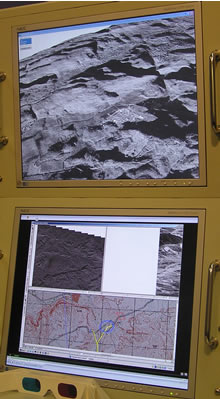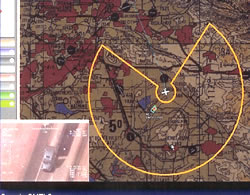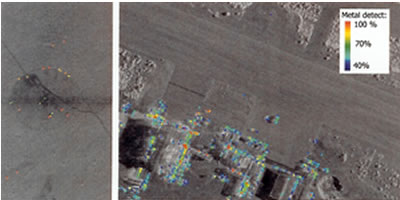By using state of the art technology, much of the information can be shared, fused and used to improve the final product. For example, scanning a wide area for time critical targets cannot rely only on EO means alone. By merging GMTI and Stripmap SAR images, wide areas can be scanned rapidly for moving targets, man-made objects and potential targets. Such elements can be anything from a pick-up truck to a transportable missile launcher. When potential targets are detected, Spot mode is used to automatically scan through each location in an attempt to distinguish differently shaped targets such as a specific type of tank or truck. Known targets can be tagged by their distinct signature, or actively marked for automatic detection and tracking. SAR imagery is sufficient for identification of military targets, identifying the distinctive 3D signatures and object shapes of specific vehicle types; further investigation of the target is required for engagement of typical targets in asymmetric warfare.
 EO sensors are employed to further examine specific locations or suspicious objects detected by the radar. By fusing SAR, IIR, thermal and EO images, analysts can now focus on the potential “needles”, which automatic processes have weeded out of the larger “haystack”.
EO sensors are employed to further examine specific locations or suspicious objects detected by the radar. By fusing SAR, IIR, thermal and EO images, analysts can now focus on the potential “needles”, which automatic processes have weeded out of the larger “haystack”.
As all data is geo-referenced, target coordinates can be extracted immediately for rapid response. The fusion of signals from different spectral bands enable better visualization of information which could be not be seen in by visible means. The US Air Force pursues several Foliage Penetrating (FOPEN) concepts, including processing of hyperspectral sensor data, for collection, location, and identification of camouflaged and concealed targets and foliage penetrating SAR.
Additional parts of this article:

















